Why Your Phone Is Charging Slowly: Simple Ways to Fix It
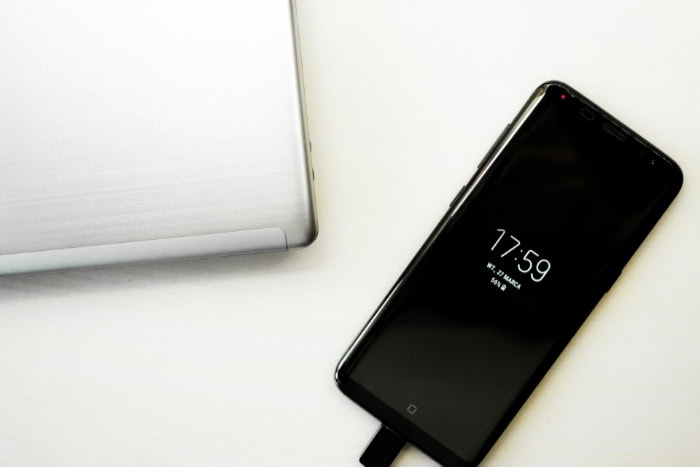
Few technical issues are more annoying than plugging in a phone only to see the battery percentage crawl upward. You expect a quick power boost, but a sluggish connection can leave you tethered to a wall outlet for hours.
Charging speed is the product of a hardware chain involving the power source, the cable, the adapter, and the device itself. When just one link fails or offers insufficient power, the entire process suffers.
The troubleshooting steps below will help you test each variable to find the bottleneck.
Inspecting Charging Accessories
The most common reason for a sudden drop in charging speed is a fault within the external hardware. Cables and adapters endure significant daily wear and tear, and they are often the first components to fail.
Before assuming the phone battery is defective, it is essential to systematically test the charging gear to ensure it can still deliver the necessary energy.
Cable Integrity
The charging cable is the most fragile link in the chain. It gets twisted, yanked, and bent repeatedly.
Start by looking for obvious signs of stress, such as fraying near the connector heads, exposed wires, or kinks along the length of the cord. Physical damage often breaks the internal shielding or the copper wires responsible for power transmission.
However, a cable can look pristine on the outside while suffering from internal failures. The microscopic wires inside the sheath can snap or disconnect from the plug assembly due to repeated bending.
This internal damage increases resistance, which restricts the flow of electricity to the device. Swapping the current cable with a known working spare is the best way to confirm if the wire is the culprit.
Adapter Wattage and Amperage
Not all charging bricks are created equal. Many older adapters, or the small cubes often included with legacy devices, only output 5 watts of power.
Modern smartphones require significantly more energy to fast charge, with many supporting speeds of 20 watts, 30 watts, or even higher. Using an old 5-watt adapter with a new flagship phone will result in painfully slow charging speeds because the brick simply cannot supply energy fast enough.
You must verify the output rating printed on the adapter, usually found in small text on the side or bottom. It should match or exceed the maximum charging speed your phone supports.
If the adapter is underpowered, the phone will charge safely, but it will do so at a fraction of its potential speed.
Compatibility and Standards
Fast charging relies on specific communication protocols between the charger and the phone. Common standards include USB Power Delivery (USB-PD) and Quick Charge, while some manufacturers use proprietary technology like SuperVOOC or Warp Charge.
If the adapter and cable do not support the same specific protocol as the phone, the device will default to the slowest, standard charging rate to prevent hardware damage. It is crucial to ensure that third-party accessories explicitly state support for the specific fast-charging standard your device requires.
Evaluating the Power Source
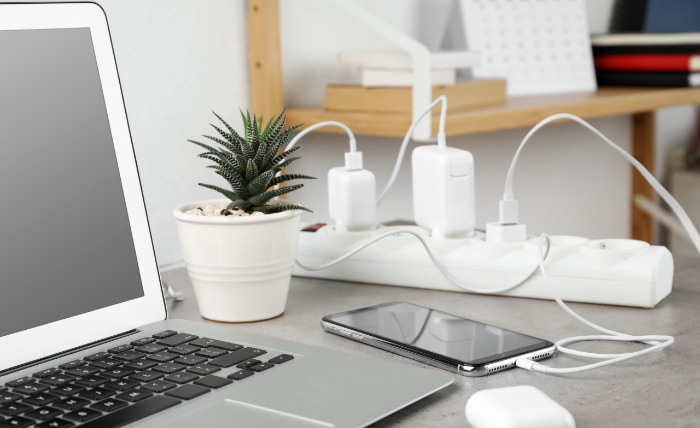
Even if your cable and adapter are in perfect condition, the charging speed is ultimately limited by the power source they are plugged into. The electricity supply must be consistent and powerful enough to drive the charging process.
Identifying where you plug in your device is just as important as what you use to plug it in.
Wall Outlets vs. USB Ports
There is a massive difference in power output between a dedicated wall socket and the USB ports found on computers or in cars. Most laptop USB ports and standard vehicle outlets are designed primarily for data transfer or maintaining a battery level, rather than charging a depleted one quickly.
These ports typically output only 0.5 to 1 amp of current.
In contrast, a wall outlet combined with a proper adapter can supply several amps. If you are accustomed to wall charging and switch to a car charger or laptop port, the slowdown will be noticeable immediately.
For the fastest results, always prioritize a direct connection to main power over auxiliary USB ports.
Wireless Charging Limitations
Wireless charging offers convenience, but it almost always compromises speed. The technology relies on magnetic induction, which is inherently less efficient than a direct copper wire connection.
Energy is lost as heat during the transfer, meaning the phone receives less power than the pad draws from the wall.
Furthermore, physical obstructions can drastically reduce efficiency. Thick protective cases, metal plates for magnetic mounts, or even a slight misalignment between the phone’s coils and the charging pad can impede the energy flow.
If speed is the priority, a wired connection is superior. If you must use wireless charging, ensure the phone is perfectly centered and consider removing thick cases.
Faulty Surge Protectors or Outlets
Sometimes the issue lies with the household infrastructure. Power strips and surge protectors can degrade over time, leading to inconsistent power delivery.
A loose socket in a power strip might fail to provide a steady connection, causing the phone to constantly disconnect and reconnect, which halts the charging cycle. To rule this out, plug the adapter directly into a different wall outlet in another room.
If the speed improves, the original power strip or outlet is likely defective.
Examining the Charging Port
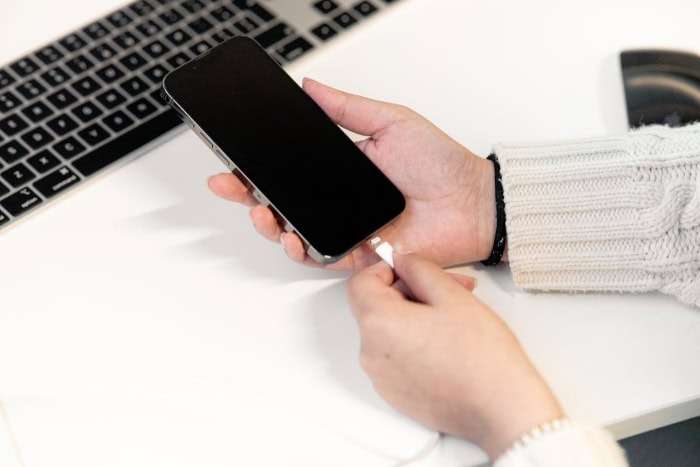
When the accessories and power source are verified to be working, the problem may be located at the entry point of the phone itself. The charging port is an open cavity that is constantly exposed to the environment, making it susceptible to physical blockages and environmental damage that can prevent a solid electrical connection.
Debris and Obstructions
Every time a phone slides into a pocket or a bag, the charging port acts as a scoop for lint, dust, and crumbs. Over time, repeated plugging in packs this debris to the bottom of the port.
This compacted layer creates a physical barrier that stops the charging cable from inserting fully. As a result, the conductive pins inside the cable cannot make proper contact with the receptors in the phone.
Using a non-conductive tool, such as a wooden toothpick or a plastic pick, to gently dislodge and remove this lint can often instantly restore fast charging capabilities.
Corrosion and Moisture
Moisture is a significant threat to electronic connections. If the phone has been exposed to high humidity, sweat, or liquid splashes, the metal contacts inside the port may corrode or oxidize.
Corrosion creates resistance that slows down charging or generates excess heat. Additionally, modern smartphones have sensors that detect moisture in the port.
If these sensors trigger, the operating system will disable or severely throttle charging to prevent short circuits. Inspect the port with a light; green or white residue on the contacts indicates corrosion that may require professional cleaning.
Loose Connections
Ports have a finite lifespan. After thousands of plug-in cycles, the internal mechanisms that hold the cable in place can wear down.
This results in a loose connection where the cable wiggles or falls out easily. A worn port may only charge when the cable is held at a specific angle.
If the cable clicks firmly into other devices but feels loose in your phone, the internal connector is likely worn out. This physical looseness prevents the consistent contact required for high-speed energy transfer.
Analyzing Software Settings and Usage Habits
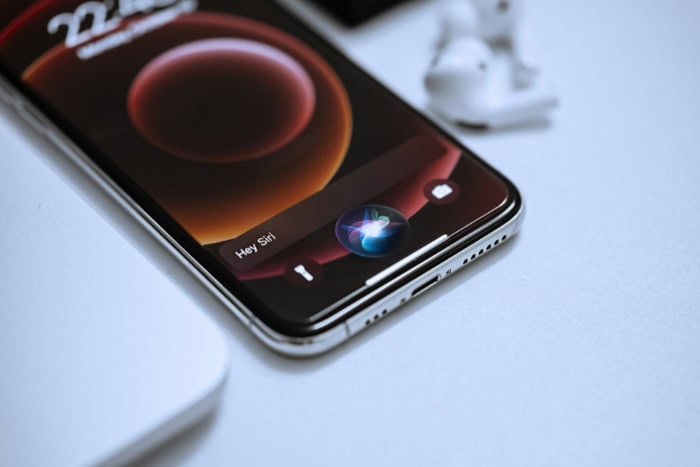
Hardware is often the primary suspect when charging speeds drop, but the software running on your device plays an equally significant role. Your phone is a sophisticated computer that manages power intake based on temperature, usage patterns, and system settings.
If the hardware checks out, the issue likely stems from how the phone is being used while plugged in or how the operating system is managing the flow of electricity to protect the internal components.
Parasitic Load
One of the most common causes of slow charging is using the device while it is plugged in. This phenomenon is known as parasitic load.
When you run high-intensity applications like 3D games, video streaming services, or GPS navigation while charging, the phone consumes power almost as fast as the adapter supplies it.
Think of it as trying to fill a bucket with water while a hole in the bottom leaks it out. If your charger supplies 20 watts of power but your screen and processor are consuming 15 watts, only 5 watts remain to charge the battery.
In extreme cases, the battery level may stay stagnant or even drop despite being connected to power. For the fastest charge, let the screen stay off and the device remain idle.
Background Processes
Sometimes the heavy lifting happens without you seeing it. Rogue applications or aggressive background processes can drain resources silently.
Features like automatic cloud backups, large app updates, or photos syncing to the cloud often trigger immediately when a charger is connected.
These processes demand significant processor power and radio usage, which generates heat and consumes energy. If your phone feels warm and charges slowly even when the screen is off, check the battery settings menu.
Most smartphones provide a breakdown of battery usage by app. If a specific app is consuming a disproportionate amount of energy in the background, force closing it or uninstalling it may resolve the charging bottleneck.
Intelligent Battery Features
Modern smartphones come equipped with smart charging features designed to preserve battery health over the long term. Apple’s “Optimized Battery Charging” and Android’s “Adaptive Charging” are excellent examples.
These features learn your daily routine and intentionally delay charging past 80% until just before you typically unplug the device.
If you plug your phone in at night, it might charge quickly to 80% and then sit there for hours, trickling in the final 20% right before your morning alarm. If you wake up earlier than usual or check your phone in the middle of the night, it might appear to be charging painfully slowly.
This is not a malfunction; it is a calculated pause to prevent the battery from sitting at maximum capacity, which degrades chemicals faster. You can usually toggle this setting off in the battery menu if you need an immediate full charge.
Thermal Throttling
Heat is the enemy of electronics, and lithium-ion batteries are particularly sensitive to high temperatures. When a phone gets too hot, the operating system initiates thermal throttling.
This safety mechanism restricts the speed of the processor and drastically reduces the charging input current to lower the internal temperature.
If your phone is charging in a hot car, sitting in direct sunlight, or resting under a heavy pillow, it will deliberately slow down the intake of power to prevent overheating and permanent damage. The charging speed will only return to normal once the device has cooled down to a safe operating temperature.
Assessing Battery Health and Age
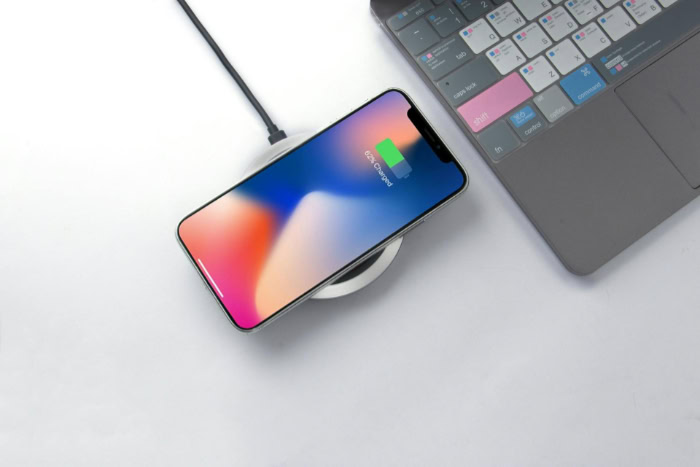
If you have verified that your accessories are functional and your software settings are correct, the final variable to consider is the battery itself. Batteries are consumable components with a finite lifespan.
No matter how well you treat the device, the physical component storing the energy will eventually degrade and lose its ability to perform effectively.
Chemical Degradation
Lithium-ion batteries rely on a chemical reaction to store and release energy. Over time, the materials inside the battery degrade.
As the battery ages, the internal resistance increases. This buildup of resistance makes it harder for the battery to accept energy quickly.
An old battery simply cannot handle the rapid influx of power that a new battery can. Even if you use a high-speed 45-watt charger, a degraded battery might only be able to safely accept 5 or 10 watts.
This chemical reality means that an older phone will naturally charge slower than it did when it was brand new, regardless of the charger used.
Cycle Counts
The lifespan of a phone battery is measured in charge cycles, not just years. A charge cycle is defined as using 100% of the battery’s capacity, whether all at once or spread over several days.
Most standard smartphone batteries are rated to retain about 80% of their original capacity after 500 to 800 complete charge cycles.
Once a battery surpasses this count, its performance drops precipitously. The software may struggle to calibrate the remaining time accurately, and the charging speed slows down to protect the unstable chemical structure.
You can often check the battery health percentage in the device settings. If the maximum capacity is below 80%, the battery is considered consumed and is likely the cause of your charging woes.
Physical Symptoms of Failure
In advanced stages of degradation, the battery may exhibit physical signs of failure that go beyond slow charging. If your phone shuts down randomly even when the indicator shows 20% or 30% remaining, the battery voltage is likely becoming unstable.
A more dangerous symptom is physical swelling. As the chemicals break down, they can release gas that inflates the battery pack.
This can cause the back panel of the phone to lift, the screen to bulge, or the frame to separate. If you notice any swelling or “spicy pillow” effect, stop charging the device immediately.
A swollen battery is a fire hazard and indicates that the component has failed completely and requires professional removal.
Conclusion
Restoring fast charging speeds is a process of elimination. The troubleshooting steps outlined above follow a logical path starting from the external components and working inward.
You began by inspecting the charging cable and adapter for damage or incompatibility, then moved to the power source to ensure the outlet was providing sufficient energy. From there, you examined the physical charging port for debris or corrosion before analyzing your software settings and usage habits.
Finally, you considered the age and health of the battery itself.
The most effective way to identify the culprit is to isolate each variable. Test one change at a time.
Swap your cable but keep the same adapter. If the speed improves, you have found the issue.
If you change the cable, adapter, and wall outlet simultaneously, you will never know which component was actually at fault. This methodical approach prevents you from replacing working accessories or blaming the phone when a simple lint buildup in the port might be the only obstacle.
If you have meticulously gone through every check and the phone still charges slowly, the issue likely resides deep within the internal hardware. A degraded battery or a damaged motherboard charging controller cannot be fixed with software tweaks or new cables.
At this stage, the best course of action is to visit a professional repair shop for a diagnostic test or a battery replacement to bring the device back to full functionality.


